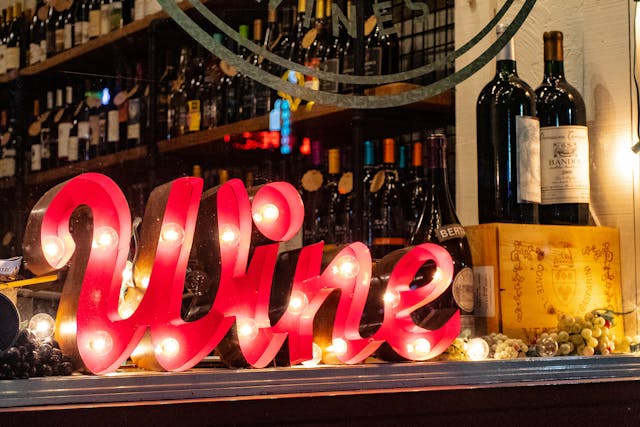Mastering the art of wine tasting requires all-round tasting skills from vision, smell to taste. The following is a detailed tasting method from these aspects:
一. Visual Tasting
1. Choose the right place and tools
Choose a quiet, clean and well-lit environment for tasting, which will help you see the wine more clearly.
Use clean, clear tasting glasses to better observe the color and clarity of the wine.
2. Observe the color and transparency of the wine
Pour the wine into a tasting glass, gently lift the glass and observe the color of the wine through the light. Different types of wine have different color characteristics. For example, red wine is usually dark red or purple, while white wine may be light yellow or clear.
Pay attention to the color and brightness of the wine, and observe whether there are suspended solids or sediments, which can initially reflect the quality of the wine.
3. Observe the phenomenon of wine hanging on the glass
Gently turn the wine glass so that the liquid covers the sides of the glass. The better the quality of the wine, the more obvious and even the hanging phenomenon will be, and the wine will slowly fall down after staying on the wall of the cup.
二. Smell tasting
1. First smell
Place the wine glass 1 to 3 centimeters below your nose, inhale steadily and smell the natural aroma of the wine. The first smell captures the basic aroma characteristics of the wine.
2. Shake the cup and smell the aroma
Gently swirl the glass to bring the wine into fuller contact with the air, then smell the aroma again. In this way, you can feel the layers and changes of the wine aroma more deeply, including fruity, floral, woody, etc.
3. Sniff repeatedly
Smell it 3 to 5 times to fully feel the soul and charm of the liquor. Every sniff may lead to new discoveries, making the tasting process more colorful.
三. Taste Appreciation
1. Preparation before tasting
Before tasting, you can rinse your mouth with water to clean your mouth to prevent food residues from affecting the tasting results.
2. Taste the wine
Take a small sip of the wine and let the wine flow from the tip of the tongue to the sides of the tongue until it reaches the base of the tongue. During the tasting process, pay attention to the sweetness, acidity, bitterness and saltiness of the wine, as well as the softness of the taste.
Slowly smack the wine into your mouth a few times, allowing the wine to spread all over your tongue and fully experience its taste and flavor.
3. Reflection and evaluation
After swallowing the wine, pay attention to the lingering taste in your mouth. Evaluate the length of the aftertaste and the purity of the aftertaste. A good wine has a long finish and a pleasant aftertaste.
4. Comprehensive assessment
During the wine tasting process, in addition to the above-mentioned visual, olfactory and taste appreciation, personal taste preferences can also be used for evaluation. Factors such as sweetness, spiciness, and concentration are all important factors that affect the tasting results. At the same time, factors such as the balance, alcohol content, and consistency of the wine can also be considered to comprehensively evaluate the quality of the wine.
In addition, wine tasting is also an expression of emotion. During the tasting process, you can feel the charm and charm of the wine based on your own emotions and experiences. Tasting wine is like appreciating life. Drink slowly and carefully to get the true taste.
To sum up, mastering the art of wine tasting requires all-round tasting skills from vision, smell to taste. Through the application of these skills and the accumulation of practical experience, you can gradually improve your taste level and appreciation ability.

